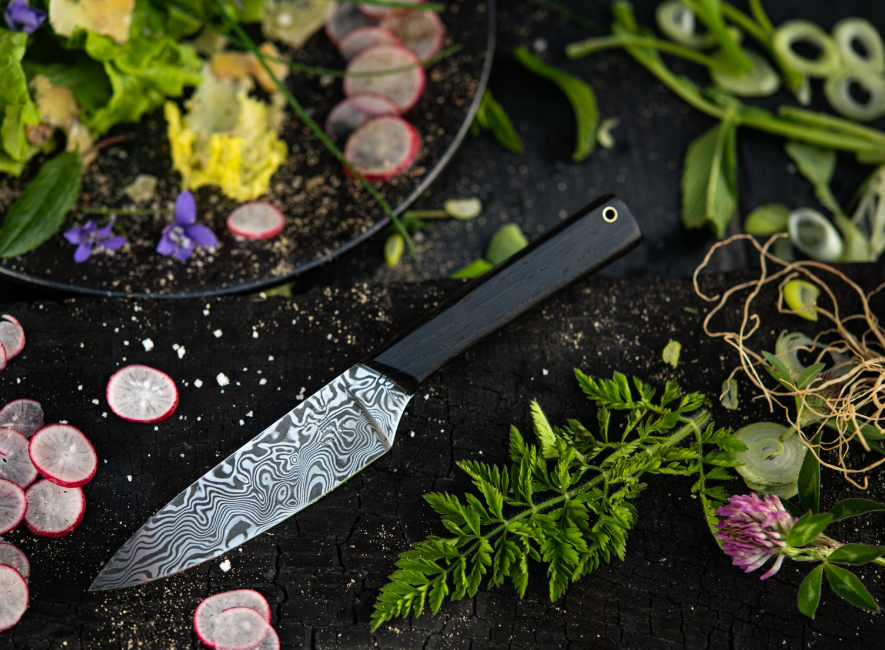Are you intrigued by the stunning patterns of Damascus knives and wondering how they’re crafted? Originally from ancient civilizations, these knives have a reputation for their unique surface textures and unparalleled durability.
This article will take you through the rich history, crafting process, advantages, and maintenance tips for this illustrious tool.
So let’s dive in to reveal the mystique behind Damascus steel!
What is a damascus knife?
A Damascus knife is a type of knife made from Damascus steel, known for its exceptional strength, durability, and unique patterns.
A Damascus Knife thrives on a legacy of top-tier craftsmanship, originating from the ancient city of Damascus. These knives stand as an emblem of superior strength and unique beauty due to their special construction.
They are crafted from layered steel, usually high-carbon steel or iron, hardened through a specialized metallurgical process called swordsmithing. This creates a recognizable wavy or watered pattern on the blade’s surface that truly sets them apart.
Further fortifying their repute is their exceptional flexibility and keen-edge retention capacity, rendering them perfect for culinary experts or outdoor enthusiasts in need of durable pocket knives.
Origins and history of damascus steel
Damascus steel is a type of steel that has a legendary reputation for its strength and beauty. Its origins can be traced back to ancient times, with its production techniques dating back as far as the 4th century BC in India.
It was primarily used in the Middle East and Asia, where it gained prominence for its superior quality and performance.
What made Damascus steel so special was its unique manufacturing process. The exact details of this process have been lost to history, but what we do know is that it involved forging together multiple layers of different types of steel.
This created a blade with exceptional hardness, flexibility, and sharpness.
The art of making damascus steel eventually spread to other parts of the world, particularly during the Crusades when European knights encountered these remarkable blades on their travels.
